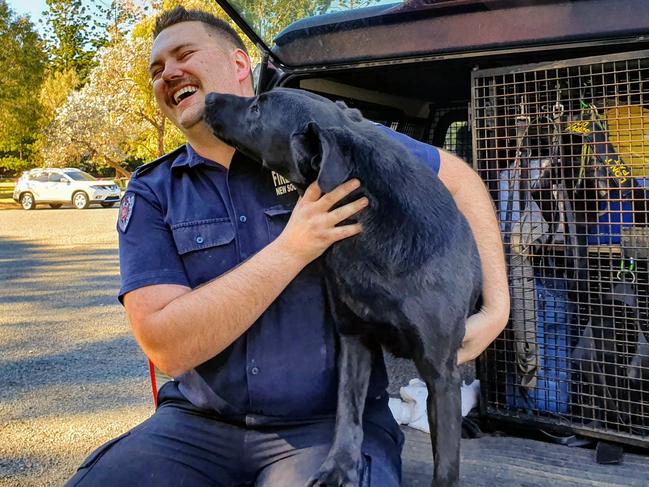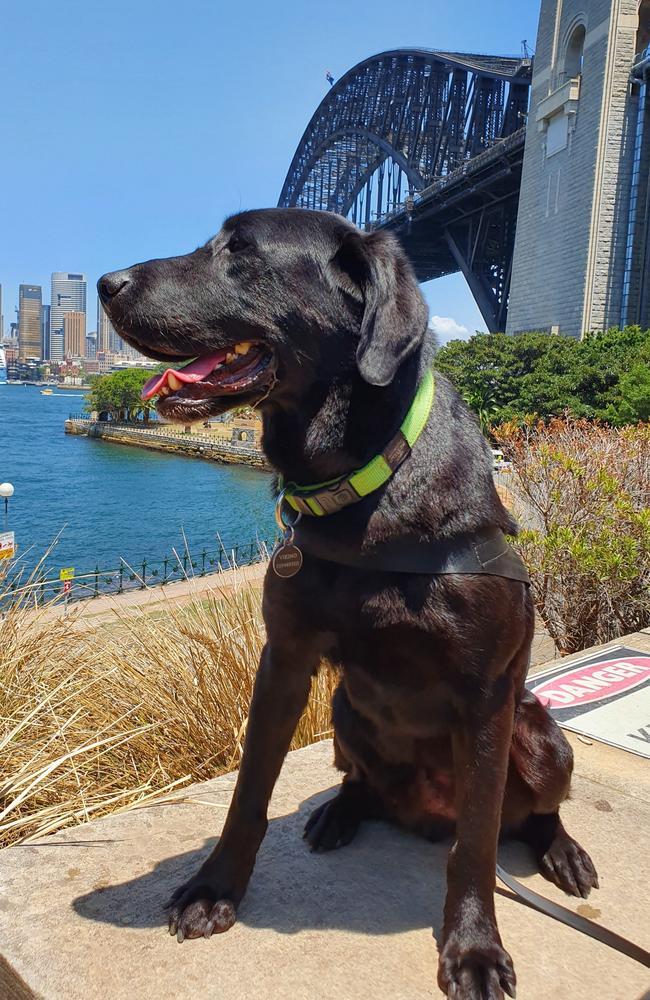Meet the brave dog sniffing out the cause of fires
Black Labrador Viking is sniffing up a storm for Fire and Rescue NSW as an accelerant detection canine. See how he is helping fire investigations, as well as the best dog-friendly activities near you.
Pets
Don't miss out on the headlines from Pets. Followed categories will be added to My News.
Imagine having to walk into the hot, smouldering aftermath of a fire and pinpoint what caused the blaze.
Consider the challenge of trying to isolate the source of the fire with smoke filling your lungs and stinging your eyes.
Think about trying to work under the scrutiny of distraught residents and bustling fire crews.
Now picture doing all of this with only your nose to guide you. Impossible? Not for a dog like Viking.

The black Labrador is a Fire and Rescue NSW accelerant detection canine (ADC), and his powerful nose makes him an invaluable weapon in the fire investigation arsenal.
Viking started work in May 2015 and is on call 24 hours a day.
“Everything in a fire leaves a footprint. The dog’s main purpose is to confirm or dismiss the presence of ignitable liquid,” Inspector Phil Etienne, who was Viking’s handler for four years in the FRNSW Fire Investigation and Research Unit (FIRU), said.
Using a dog to sniff out the source of a fire is relatively new in Australia.
FRNSW’s first fire K9, Sabre the German Shepherd, came on board in 1995, and the ADC program officially launched the next year.
ADCs assist in all investigations of fatal and suspicious fires in NSW, and sometimes also Queensland and Victoria.
DOGS OF OZ COMP
Do you have Australia’s Top Dog? Enter here and WIN!
“We attend structure fires, bushfires and mobile property fires, such as vehicles,” Mr Etienne said.
The dog team also helps police in warrant searches and lineups; if a dog does not locate accelerant at the scene of a fire, he will often find it in a suspect’s home or on their clothing instead.
Accelerant detection dogs are trained to sniff out the five ignitable liquids which are most commonly used to start fires: petrol, kerosene, mineral turpentine, paint thinners and methylated spirits.

If an accelerant is present, it rarely takes Viking very long to zero in on it.
Dogs can detect some odours in parts per trillion.
So if a human being would notice a teaspoon of sugar in a cup of coffee, an ADC could detect it in 3.7 million litres of water.
It is always a big moment when Viking locates an accelerant.
All ADCs are rewarded with the same thing: playtime with a rolled-up towel and plenty of enthusiastic praise.
The dogs’ desire for ‘towel time’ is a powerful motivator.
“For Viking, this job is his time to play. I wouldn’t play with him or wrestle until he found an odour he’s trained to detect,” Mr Etienne said.
“There’s no ‘good boy’ for anything else. If he wants to play, he goes and finds an odour.”
MORE DOGGIE NEWS
Meet the therapy dog changing stroke victim lives
How to find dog-friendly parks in your neighbourhood
Expert’s secrets to training your puppy
As well as teaching the dogs to hunt for odours, a large part of their training focuses on coping with conditions at a fire scene, which are always unpleasant and often dangerous, such as when a building is unstable or there is asbestos present.
“We put them through different agility courses, put them in dark boxes,” Mr Etienne said.
“We often train at night, because we might have to drive six hours to a bushfire scene and then work in the dark.”
When they are searching a fire scene, Viking’s safety is his handler’s chief concern. (Of course, the dog’s own clumsiness can’t be helped: Viking was once so engrossed in following a scent trail that he walked straight through a wall.)
Since Mr Etienne left FIRU in 2019 after 15 years, Viking has been reassigned to new handler Craig Gordon.
Now five, Viking will work until he is eight or nine years old.
“We are prepared for anything!” Mr Gordon said.
* This is an edited extract from Dogs with Jobs by Laura Greaves (Penguin, $19.99)
Originally published as Meet the brave dog sniffing out the cause of fires

